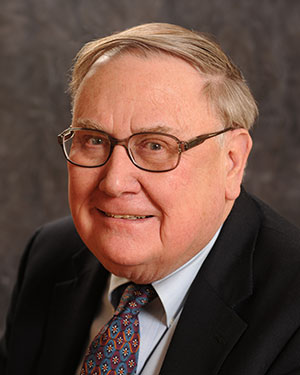Richard Holm
1933 – 2021
Class of 2015-16

Harvard University
National Academy of Sciences
American Academy of Arts and Sciences
Acknowledged as a founder of bioinorganic chemistry, Richard Holm has inspired three generations of chemists with his approach to modeling active sites of enzymes and to explaining how nature creates the metal-based active sites in proteins that carry out the chemical reactions of life.
Holm earned his bachelor’s degree in 1955 from the University of Massachusetts–Amherst and his doctoral degree in chemistry in 1959 from the Massachusetts Institute of Technology, where the renowned chemist F. A. Cotton advised him.
He served on the faculties of the University of Wisconsin, the Massachusetts Institute of Technology, and Stanford University before joining Harvard University in 1980. Holm became Higgins Professor of Chemistry in 1983 and has served as department chair. In 2013, Harvard designated Holm the Higgins Professor of Chemistry, Emeritus.
Currently, Holm’s research interests are centered in inorganic and bioinorganic chemistry, with an emphasis on the synthesis and properties of molecules whose structures and reactivity relate to biological processes.
He is a member of National Academy of Sciences and the American Academy of Arts and Sciences. The University of Chicago presented him with an honorary doctorate in 1993.
Holm received the National Academy of Sciences Award in Chemical Sciences in 1993, the American Chemical Society Award in Inorganic and Bioinorganic Chemistry in 1993, and the American Chemical Society’s F. A. Cotton Medal for Excellence in Chemical Research in 2005.
Other honors include the John C. Bailar Medal from the University of Illinois at Urbana-Champaign, 1973; the F. P. Dwyer Medal from The University of New South Wales, 1988; the Harrison Howe Award from the Rochester Section of the American Chemical Society, 1977; and the Centenary Medal of the Royal Society of Chemistry.
He has held more than ninety lectureships in the United States and abroad, including the Frontiers in Chemistry Lectures (Texas A&M University, Case Western Reserve University), the A. D. Little Lectures (MIT), the Muetterties Lecture (University of California, Berkeley), the Basolo Lecture (Northwestern University), the Taube Lecture (Stanford University), the Baker Lectures (Cornell University), and the Centenary and Joseph Chatt Lectures in the United Kingdom.
Holm has written one book and published more than 500 research papers on various aspects of inorganic chemistry, including static and dynamic stereochemistry; structural equilibria; nuclear magnetic resonance of paramagnetic molecules; the electron transfer concept; metal dithiolenes; synthetic metal-sulfur chemistry; reduced hemes; metal chalcogenides and molecular cluster excision; iron–sulfur and heterometal–iron–sulfur clusters; and the biologically related chemistry of vanadium, molybdenum, tungsten, iron, and nickel.
He holds five patents.
As a TIAS Faculty Fellow, Holm will collaborate with faculty–researchers and graduate students from the Department of Chemistry in the College of Science.
For more updated information:
http://faculty.chemistry.harvard.edu/holm/people/richard-h-holm
Students
Michael Moore – 2015-16
